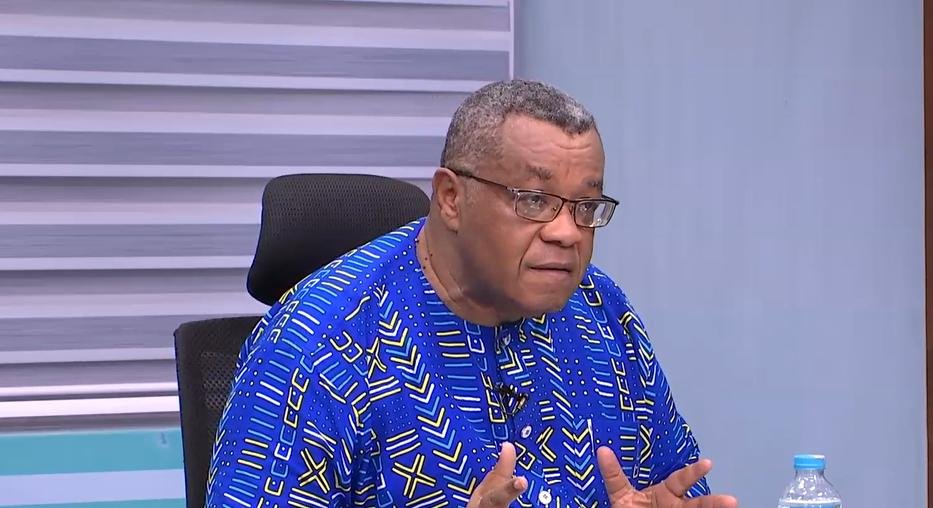In an in-depth discussion with Bernard Avle on Channel One TV, Goosie Tanoh dissected Ghana’s unemployment and economic growth challenges, shedding light on systemic inefficiencies and offering practical solutions for sustainable development. The conversation highlighted alarming unemployment rates, the low job absorption capacity of Ghana’s economy, and the need for targeted investments in key sectors.
You can watch the full interview here: Goosie Tanoh with Bernard Avle.
The Employment Landscape: A Crisis in Numbers
Unemployment Trends
- 2017: Unemployment stood at 8.4% under the NDC government.
- 2024: Under the current administration, unemployment has escalated to 14.7%, translating to 2.1 million unemployed Ghanaians, compared to 1 million in 2017.
Annual Job Market Dynamics
- 308,000 job seekers enter the workforce annually, yet only 120,000 secure jobs, leaving 188,000 unemployed every year.
- Of the 11.9 million employed, 8.2 million are in vulnerable employment, characterized by poor working conditions, low wages, and minimal productivity.
Youth and Gender Inequality
- Unemployment among 15–30-year-olds is 30%, more than double the national average.
- 67% of the unemployed are women, reflecting deep-rooted gender disparities.
- NEET Youth: 1.3 million young people are Not in Education, Employment, or Training, a critical demographic excluded from economic activity.
Low Job Absorption Capacity
- Ghana’s employment elasticity is 0.29%, meaning every 1% of economic growth generates minimal jobs.
- Despite GDP growing from $10 billion in 2000 to $75 billion in 2024, the 60% job absorption rate is insufficient to reduce unemployment significantly.
Key Sectors for Transformation and Job Creation
Agriculture and Agribusiness
- Agriculture now contributes only 20% of GDP, yet it employs 33% of the workforce.
- The sector is hampered by rural-urban migration, poverty, and lack of financing, forcing Ghana to spend $2 billion annually on food imports.
Opportunities in Agriculture:
- Develop value chains for crops like cocoa and Shea nuts. Currently, 50–60% of Shea nuts go unharvested each season, presenting a missed economic opportunity.
- Leverage Ghana’s position in ECOWAS to supply food to 350 million people, including demand from Sahel regions.
- Derisk agricultural financing to make loans accessible to local farmers and agribusinesses.
Other High-Potential Sectors
- Pharmaceuticals: Reduce import dependency by supporting local production.
- Tourism: Boost cultural and ecological tourism for sustainable income and jobs.
- Small-Scale Mining: Formalize and regulate operations to increase employment and sustainability.
- Fabrication and Metals: Build industrial capacity for manufacturing.
- Education and Health: Invest in these sectors to generate meaningful, long-term employment.
Banking and Financial Reform
- Ghana’s banking sector is import-dependent and generates limited jobs.
- High interest rates lock out local businesses and farmers, allowing foreign investors with access to cheaper global loans to dominate.
- BOG’s Role: The Bank of Ghana must reform its credit policies. Instead of focusing solely on inflation control, it should support job creation and industrial growth.
NDC’s Proposed Solutions
- Revamp Financial Systems
- Empower microfinance institutions to scale sustainably.
- Incentivize banks to lend to job-creating sectors like agriculture and manufacturing.
- Reform the Bank of Ghana
- Recalibrate its mandate to prioritize employment alongside inflation control and monetary stability.
- Support Agriculture and Agribusiness
- Address high production costs and low yields by improving technology and financing.
- Create value-added processing industries to reduce food imports and boost exports.
- Targeted Investment in Growth Sectors
- Attract investments in industries with high employment potential, such as agribusiness, manufacturing, and pharmaceuticals.
- Raise the employment elasticity to 0.5% or higher for more sustainable economic growth.
Economic Realities and Structural Reforms
Goosie Tanoh pointed out that most inflation in Ghana stems from production costs, particularly in agriculture. Farmers operate on low yields, requiring significant output just to break even. Addressing inefficiencies in production is critical to reducing inflation and stabilizing the economy.
The NDC plan also includes fostering debt financing, a crucial aspect of economic growth, by ensuring that credit is accessible for productive ventures.
A Path to Inclusive and Sustainable Growth
Goosie Tanoh’s analysis underscores that Ghana’s unemployment crisis is not a standalone issue but a structural failure of the economy to translate growth into jobs. Addressing these challenges requires bold reforms, investments in key sectors, and a focus on job creation.
From agricultural revitalization to banking reform, the solutions are clear: Ghana must prioritize inclusive, job-driven growth to secure its economic future. The path forward lies in empowering the youth, supporting women, and leveraging the country’s vast potential to build a prosperous and equitable economy.
Watch the full interview for more insights: Goosie Tanoh with Bernard Avle.
You may also Download the FAQs on John Mahama’s 24-Hour Economy Strategy:





















